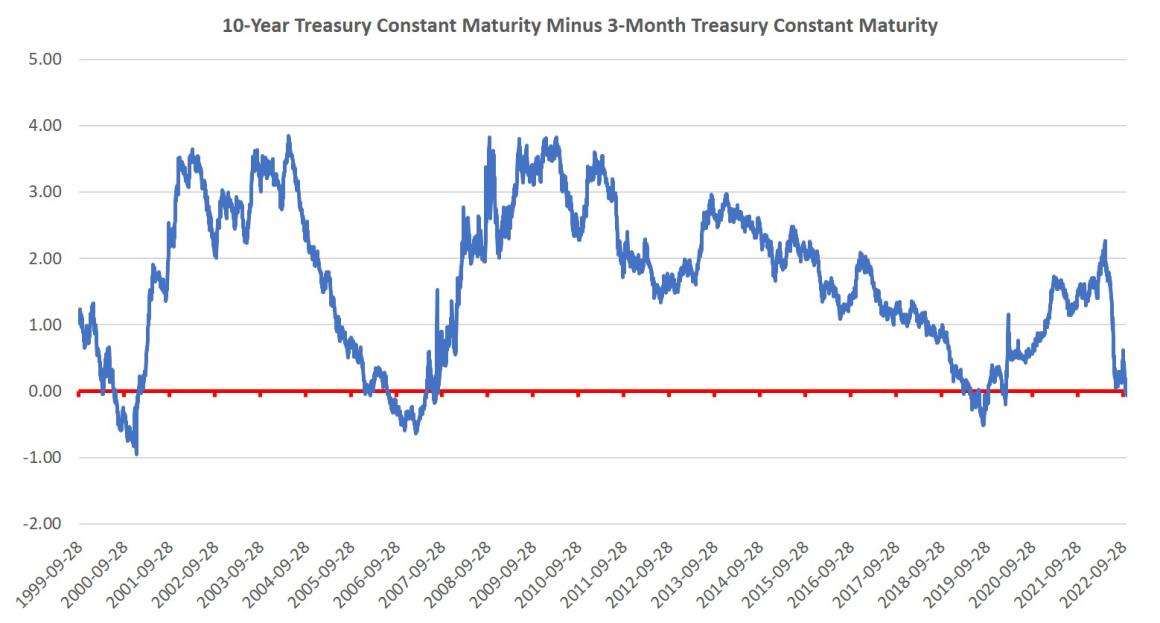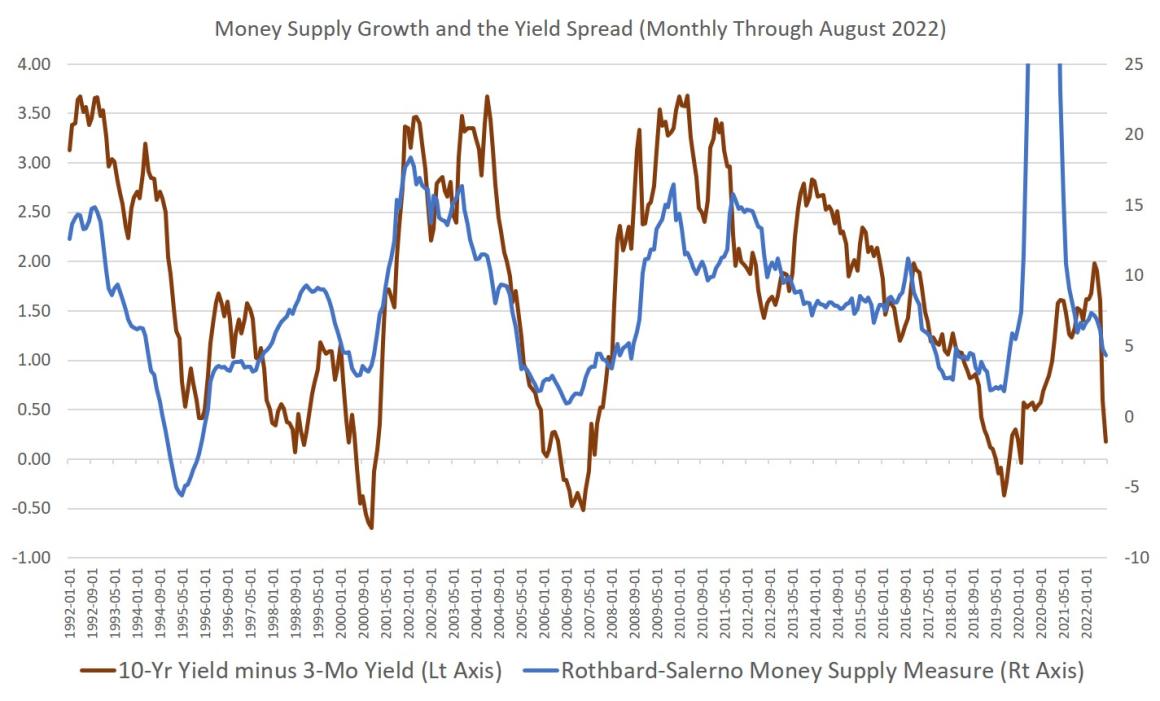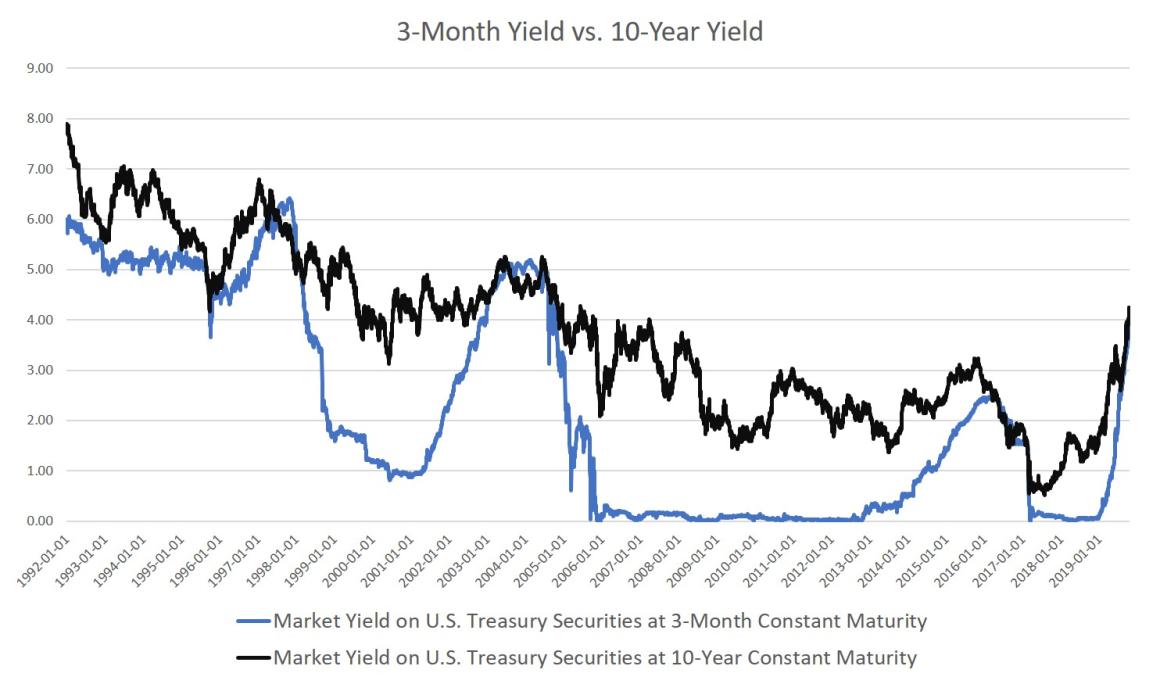In recent decades, every instance in which the economy contracted two quarters in a row has coincided with a recession. Nonetheless, the Biden Administration and the leadership at the Federal Reserve insist there is no recession now, nor is one even in the works. On the other hand, declining GDP growth, rising credit card debt, disappearing savings, and falling disposable income all point to recession. And now one of the most closely watched recession indicators is now flashing red: the yield curve inversion. As The Wall Street Journal put it Wednesday: The spread between yields on the three-month U.S. Treasury bill and the benchmark 10-year note has inverted several times since Tuesday’s trading session. Inversions have preceded both the 2008 financial crisis and
Topics:
Ryan McMaken considers the following as important: 6b) Mises.org, Featured, newsletter
This could be interesting, too:
Nachrichten Ticker - www.finanzen.ch writes Die Performance der Kryptowährungen in KW 9: Das hat sich bei Bitcoin, Ether & Co. getan
Nachrichten Ticker - www.finanzen.ch writes Wer verbirgt sich hinter der Ethereum-Technologie?
Martin Hartmann writes Eine Analyse nach den Lehren von Milton Friedman
Marc Chandler writes March 2025 Monthly
In recent decades, every instance in which the economy contracted two quarters in a row has coincided with a recession. Nonetheless, the Biden Administration and the leadership at the Federal Reserve insist there is no recession now, nor is one even in the works.
On the other hand, declining GDP growth, rising credit card debt, disappearing savings, and falling disposable income all point to recession. And now one of the most closely watched recession indicators is now flashing red: the yield curve inversion.
As The Wall Street Journal put it Wednesday:
The specific inversion we’re talking about here is the spread between the 10-year and 3-month Treasurys. Because investors usually want higher returns on longer-term debt, 10-year yields tend to be well above 3-month yields. But when the reverse happens, 3-month yields rise above the 10-year yield and the yield curve “inverts.” |
This already happened with the spread between the 2-year and 10-year Treasurys. That is, the 10-year yield minus the 2-year yield has been negative since July of this year, and this also points toward recession. In fact, the 10-2 inversion has predicted every recession for more than 40 years. That includes the 2020 recession since the 10-2 inversion was already pointing to recession in 2019, meaning there almost certainly would have been a recession in 2020 or 2021 even without the Covid Panic.
But the Fed tends to keep an even closer eye on the 10-year/3-month spread, and even that is now pointing to recession as well.
So, we should probably get ready for mounting bad news over the next year.
What’s Behind a Yield Curve Inversion
But why is an inversion of the yield curve indicative of a recession? It stems in part from the fact that both recessions and yield curve inversion follow sizable slowing in monetary inflation. In his book Understanding Money Mechanics, Robert Murphy writes:
Changing growth rates in the Austrian “true money supply” (TMS) monetary aggregate correspond quite well with the spread in the yield curve… when the banking system contracts and money supply growth decelerates, then the yield curve flattens or even inverts. It is not surprising that when the banks “slam on the brakes” with money creation, the economy soon goes into recession.”
Here’s why deceleration in monetary growth leads to an inversion in the yield curve: Remember that the longer-term yield is typically higher than the short-term. So, in order to get an inversion between the 10-year yield and the 3-month yield, either the longer-term yield must go down or the shorter-term yield must go up. Or both.
It turns out the inversion is usually driven mostly by rapid increases in the short-term yield, rather than declines in the longer-term yield. This is important, as Murphy explains:
In the Misesian framework, the unsustainable boom is associated with “easy money” and artificially low interest rates. When the banks (led by the central bank, in modern times) change course and tighten, interest rates rise and trigger the inevitable bust. (It is standard in macroeconomics to assume that the central bank’s actions affect short-term interest rates much more than long-term interest rates.)
So, monetary deceleration, yield curve inversion, and recession all go hand in hand, and the Austrians have the best explanation for this. Mainstream economists often try to explain the inversion-recession connection on the idea that the yield curve inverts because investors expect trouble ahead. But as Murphy notes, this explanation would “make sense if yield curve inversions typically occurred when the long bond yield collapses.”
But that’s not what happens.
Rather it’s the Austrian theory, which notes the role of monetary growth in the boom-bust cycle and points to rising short-term yields as the real driver of the inversion.
Murphy explained all this back in 2021, well before the current recession signals were flashing.
So does Murphy’s explanation hold this time around as well? It sure does.
A Look at Recent TrendsFor one, money supply growth has decelerated in a big way over the past 18 months. Year-over-year growth had been more than 30 percent during March of 2021. As of August 2022, that growth rate had fallen to 4.3 percent. So, naturally, we’d expect to see market interest rates increase. |
|
| Consequently, yields in Treasurys has also been driven up. While both the 10-year yield and the 3-month yield have both increased over the past six months, the 3-month yield has increased considerably more. The 10-year yield rose 180 percent from about 1.5 percent to about 4 percent since late 2021, the 3-month yield increased 4,000 percent from around 0.1 to about 4:
So, the yield curve is progressing just as we expect it should. The Fed has temporarily stepped back from Quantitative Easing and from its manipulation of market interest rates, allowing them to rise. This has led to a deceleration in money-supply growth. It has also meant rising yields in Treasurys, especially short-term ones. Consequently, the yield curve has inverted, signaling recession. |
Now the question is how much longer the Fed can stomach its current tightening before it capitulates, “pivots” back to easy money, and attempts to avoid a serious downturn. In other words, we’re waiting to see how long it takes the Fed to repeat all the same mistakes of Arthur Burns during the 1970s stagflation.
Tags: Featured,newsletter



